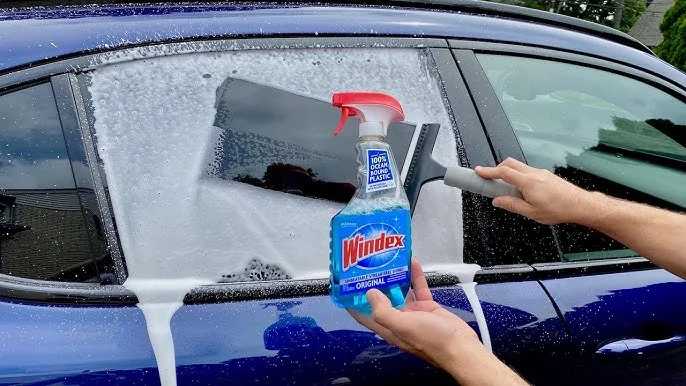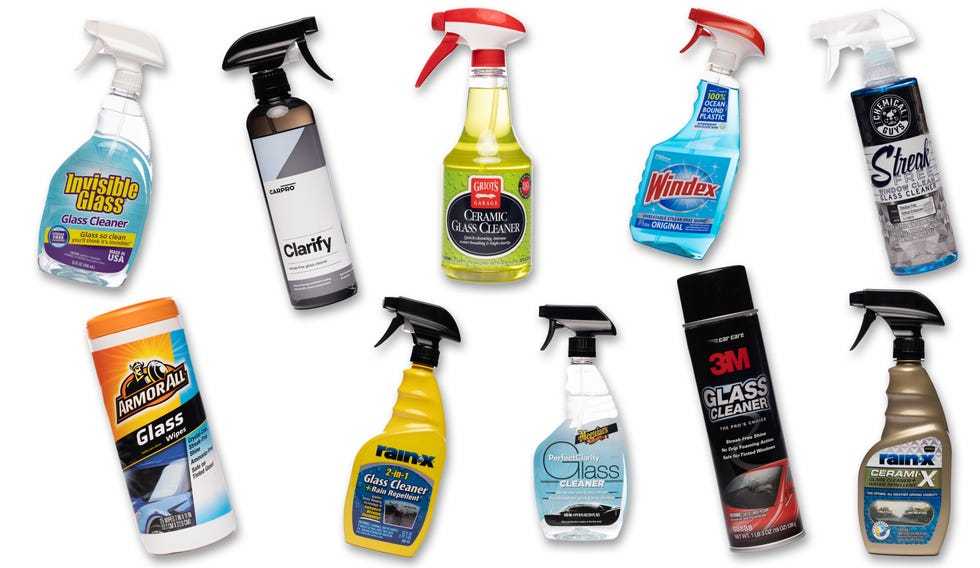To clean laminated glass effectively, start by using a soft microfiber cloth and a gentle glass cleaner to avoid scratches. For stubborn dirt, add a mixture of water and a few drops of mild dish soap, then wipe gently. Finish by drying with a clean, dry cloth to prevent streaks and smudges.
For the best results, cleaning laminated glass requires a careful approach to preserve its clarity and safety features. The key is to use gentle cleaning products and avoid harsh abrasives that may damage the laminated layers. Regular maintenance with the right tools can keep your glass looking new and ensure its longevity. Whether it’s for windows, doors, or decorative panels, knowing how to properly care for laminated glass can save you time and money in the long run. Keeping it spotless not only improves visibility but also maintains the aesthetic appeal of your space.
How to Clean Laminated Glass Properly
Cleaning laminated glass requires specific techniques to preserve its clarity and integrity. This section provides detailed guidance on the best practices for maintaining laminated glass in homes, offices, or vehicles. Proper cleaning prevents scratches, streaks, and damage, ensuring the glass remains clear and durable for years. We will explore various cleaning methods, tools, and tips tailored for laminated glass surfaces.
Understanding Laminated Glass Properties
Laminated glass consists of two or more glass layers bonded with an interlayer, typically polyvinyl butyral (PVB). This construction makes the glass safer and more resistant to shattering. However, because of the interlayer, it responds differently to cleaning agents and methods compared to standard glass. Knowing these properties helps in choosing appropriate cleaning techniques.
Why Laminated Glass Needs Special Care
The PVB interlayer can be sensitive to harsh chemicals, which may cause discoloration or degradation over time. Excess moisture or abrasive cleaners should be avoided to keep the interlayer intact. Proper cleaning enhances the longevity of laminated glass, maintaining its safety features and visual clarity.
Gathering the Right Supplies for Cleaning
Before starting, assemble all necessary cleaning tools and materials to perform an effective cleaning session. Using the right supplies avoids damage and achieves a streak-free shine.
- Soft microfiber cloths: Gentle on glass and effective at removing dirt without scratching.
- Non-abrasive glass cleaner: Specially formulated for laminated or coated glass surfaces.
- Distilled water: Reduces mineral deposits that can cause streaks.
- Spray bottles: For easy application of cleaning solutions.
- Squeegee with a rubber blade: Ideal for large windows or panels to remove excess liquid smoothly.
- Vinegar solution (optional): A natural cleaner that can be diluted for gentle cleaning.
- Soft scrub brushes (if needed): For tough dirt, but only with gentle pressure.
Preparing the Cleaning Solution
Choosing the correct cleaning solution is crucial. Commercial glass cleaners designed for laminated surfaces are safest, as they contain no harsh chemicals that could damage the interlayer.
DIY Cleaning Solution Recommendations
If you prefer homemade options, mix equal parts of distilled water and white vinegar. Add a few drops of mild dish soap to enhance cleaning power. Always test on a small area first to ensure compatibility.
Step-by-Step Cleaning Process
Cleaning laminated glass properly involves several steps to ensure thoroughness while protecting the surface.
Initial Dusting and Dirt Removal
Start by gently wiping the surface with a dry microfiber cloth to remove loose dirt and dust. This step prevents scratching when applying moisture later.
Applying the Cleaning Solution
Spray the cleaner generously onto the surface or onto a microfiber cloth. Avoid spraying directly onto large glass panels to prevent excess liquid from seeping into edges.
Wiping and Cleaning
Use a clean microfiber cloth to wipe the surface in circular or vertical motions. Apply light pressure to remove smudges, fingerprints, and dirt. For stubborn spots, let the cleaner sit for a few moments before wiping.
Removing Excess Moisture
Utilize a squeegee or a dry microfiber cloth to wipe away any remaining liquid. This step helps in preventing streaks and water spots.
Dealing with Stubborn Stains and Residue
Some stains or residues may be tougher to remove. Use a soft-bristle brush with mild cleaner or vinegar solution to gently scrub affected areas. Always work softly to avoid scratching or damaging the laminated layer.
Addressing Water Spots and Mineral Deposits
For mineral deposits, especially after hard water exposure, apply a vinegar solution and let it sit briefly. Then, wipe clean with a microfiber cloth to restore clarity.
Maintaining Your Laminated Glass
Regular cleaning keeps laminated glass looking its best and prolongs its lifespan. Establish a cleaning schedule based on usage and exposure to dirt or contaminants.
Tips for Long-Term Care
- Clean laminated glass at least once every month or more often if exposed to pollution or dirt.
- Always use soft cloths or brushes to prevent scratches.
- Check for any damage or chips that might need professional repair.
- Avoid using harsh chemicals like bleach or ammonia-based cleaners which can damage the interlayer.
- Wipe with a clean, dry cloth after cleaning to prevent streaks and water spots.
Preventive Measures and Common Mistakes to Avoid
Even with proper techniques, some mistakes can lead to damage or ineffective cleaning.
What to Avoid
- Using abrasive pads or brushes that can scratch the surface.
- Applying excessive pressure during cleaning, which may crack the glass or damage the interlayer.
- Spraying cleaner directly onto edges or frames where liquid might seep into the interlayer.
- Utilizing chemical cleaners with aggressive solvents or ammonia that can weaken the laminated layer.
Preventive Measures
Regularly inspecting the laminated glass for signs of wear or damage helps in addressing issues early. Using gentle cleaning methods and suitable products ensures the glass stays clear and safe. Always follow manufacturer guidelines for specific laminated products.
Special Considerations for Different Laminated Glass Types
Different types of laminated glass, such as laminated safety glass for doors or laminated windows, may have specific cleaning requirements.
For Indoor Windows and Doors
Use mild cleaners and soft cloths. Avoid excessive water or harsh chemicals near seals and frames to prevent deterioration.
For Vehicle Laminated Glass
Follow manufacturer instructions carefully. Use specialized automotive glass cleaners that are safe for laminated windshields and avoid ammonia-based products that can damage the interlayer.
For Commercial or Architectural Laminated Glass
Consult with glass professionals for maintenance tips. Large panels may require professional cleaning equipment for best results.
Related Topics
How to Maintain the Safety Features of Laminated Glass
Proper cleaning preserves the integrity and safety of laminated glass for long-term use.
Cleaning Tips for Coated or Tinted Laminated Glass
Gentle cleaning agents are necessary to prevent damaging coatings or tints applied to laminated glass.
DIY Repair and Restoration of Laminated Glass
In case of minor scratches or damage, some DIY solutions may help restore clarity before professional repair.
Maintaining laminated glass involves gentle, regular cleaning with suitable products and techniques. Using the right tools, avoiding harsh chemicals, and addressing issues promptly will keep your laminated surfaces looking clear, smooth, and safe for years to come.
How to clean glass and avoid leaving streaks #cleaninghacks #glasscleaning #deepcleaning
Frequently Asked Questions
What are the best cleaning products to use on laminated glass?
Choose mild, non-abrasive cleaners that are specifically formulated for glass surfaces. Avoid harsh chemicals like ammonia or bleach, which can damage the laminated layers. Instead, opt for a mixture of water and a small amount of dish soap, and use a soft cloth or sponge to gently clean the surface. For stubborn spots, a glass cleaner designed for delicate surfaces works well, but always test a small area first.
How should I prepare the cleaning tools to avoid scratching laminated glass?
Use soft, lint-free cloths or microfiber towels to prevent scratches during cleaning. Avoid using abrasive scrubbers, steel wool, or rough sponges that can scratch the surface. Before cleaning, rinse the glass with clean water to remove loose dirt and debris, reducing the risk of scratching when wiping. Regularly inspect your cloths and replace any that become dirty or rough.
What techniques can I follow to clean laminated glass without leaving streaks?
Start by applying cleaning solution evenly across the surface. Use a squeegee or a clean, dry microfiber cloth to wipe the glass in a consistent pattern, such as a top-to-bottom motion. Avoid circular motions, which can cause streaks. After wiping, dry the glass thoroughly with a lint-free cloth to prevent water spots and streaks from forming during drying.
How can I remove stubborn stains or dirt from laminated glass effectively?
Apply a mixture of water and a few drops of dish soap to the stained area. Let it sit for a few minutes to loosen dirt. Use a soft sponge or cloth to gently scrub the stain, avoiding excessive pressure. For persistent spots, a dedicated glass cleaner with a little more strength can help, but always test in a small area first. Rinse thoroughly with clean water and dry immediately to prevent residue buildup.
What maintenance tips can help keep laminated glass looking clear and clean over time?
Clean the glass regularly to prevent accumulated dirt and grime. Wipe down the surface at least once a month with a gentle cleaner and soft cloth. Address spills and dirt promptly to avoid buildup. Avoid using abrasive cleaning tools or harsh chemicals. Ensuring the surrounding frames are clean and free of debris also helps maintain a pristine appearance, as dirt from the edges can transfer onto the glass.
Final Thoughts
To clean laminated glass properly, start by gently dusting the surface with a soft cloth to remove loose dirt. Use a mixture of mild soap and water, avoiding harsh chemicals that could damage the laminate. Wipe with a microfiber cloth to prevent streaks and scratches.
Avoid abrasive tools or excessive scrubbing, as they can impair the glass’s integrity. Regular cleaning ensures the laminated glass remains clear and intact. Paying attention to these steps guarantees a professional, streak-free finish every time.



